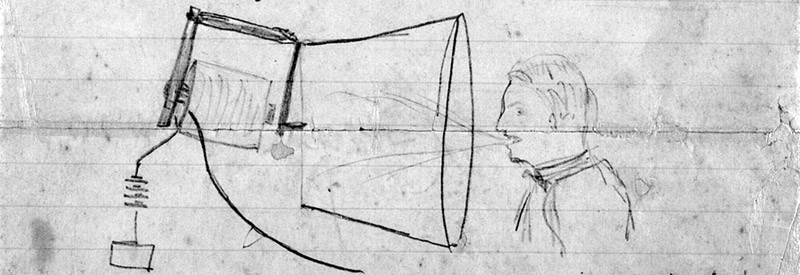The Van Gogh museum has digitized nearly a thousand drawings and paintings by Vincent Van Gogh, and made them available online
Tag: archives
Saul Bass pitch for Bell Systems logo redesign
From the AT&T Archive: watch Saul Bass pitch the Bell Systems logo redesign. (via @jalbertgagnier)
The Deleted City
The Deleted City is a digital archaeology of the world wide web as it exploded into the 21st century. At that time the web was often described as an enormous digital library that you could visit or contribute to by building a homepage. The early citizens of the net (or netizens) took their netizenship serious, and built homepages about themselves and subjects they were experts in. These pioneers found their brave new world atGeocities, a free webhosting provider that was modelled after a city and where you could get a free “piece of land” to build your digital home in a certain neighbourhood based on the subject of your homepage. Heartland was – as a neigbourhood for all things rural – by far the largest, but there were neighbourhoods for fashion, arts and far east related topics to name just a few.
The book as a device
The Internet Archive is now archiving physical copies of books.
As the Internet Archive has digitized collections and placed them on our computer disks, we have found that the digital versions have more and more in common with physical versions. The computer hard disks, while holding digital data, are still physical objects. As such we archive them as they retire after their 3-5 year lifetime. Similarly, we also archive microfilm, which was a previous generation’s access format. So hard drives are just another physical format that stores information. This connection showed us that physical archiving is still an important function in a digital era.
Recognizing that a book is just another device is important. It’s way too easy to make all sorts of cute analogies and comparisons between books and the digital world, so I’ll avoid it. How our society consumes words and images is bound to shift, but the book will still be here in fifty years.
The Euler Archive
Leonhard Euler was a Swiss mathematician and physicist. All of his work is available online in the Euler Archive from Dartmouth. The collection includes the original papers, translations, correspondence and modern research using Euler’s work.
Update: The archive now resides with the Mathematical Association of America and has changed address (reflected above).
Alexander Graham Bell sketches

The Library of Congress has Alexander Graham Bell’s family papers in their collections. Among the thousands of pieces in the archive are Bell’s journals, containing sketches and details from the earliest telephone prototypes. The diagram above indicates that using the telephone should be a far more epic experience. The Atlantic has a selection of some of the weirder sketches in the notebooks.
Rushdie’s digital archives
During the past thirty years, writers have shifted from typewriters or pen and paper to word processors, adding a new layer of complexity to the tradition of archiving their work. Emory obtained Salman Rushdie’s archives, including notebooks, photographs, manuscripts, and a number of old computers. In The Author’s Desktop, Emory Magazine details the effort put into preserving his work for both academics and the general public. Rushdie’s archives were relatively easy to access, but others can prove much more difficult:
A particular challenge, she says, is that technology may have moved beyond the hardware or software artifacts in an author’s archive. For example, working parts may be difficult to find for a broken, early model computer, disks might be unable to be read, programs the author used might be outdated (think eight-track tapes without an eight-track tape player).
It’s not just hardware, software formats change too. The team had to do a lot of file conversions to make the documents available on modern systems. The files will probably need to be upgraded again and again. We could end up with the modern version of the transcription errors that occurred as scribes copied out manuscripts.
Digital Comic Museum
The Digital Comic Museum has loads of golden age comics for download which are copyright free and in the public domain.
Jane Austen manuscripts

Jane Austen’s Fiction Manuscripts is a joint project from the University of Oxford, King’s College and the British Library, that seeks to create a digital resource from all of the author’s surviving manuscripts.
Jane Austen’s fiction manuscripts are the first significant body of holograph evidence surviving for any British novelist. They represent every stage of her writing career and a variety of physical states: working drafts, fair copies, and handwritten publications for private circulation.
Great care has been taken to provide a digital record of the original materials, as well as an accurate transcription which can be viewed simultaneously.
Austen’s handwriting and punctuation are agreed to be of great importance in the understanding of her work but have hitherto been little studied. The mark up scheme has recorded orthographic variants and punctuation symbols in minute detail for subsequent computational interrogation.
The flash interface is somewhat awkward to use, but the “diplomatic display” is quite impressive.
Cornell goes public domain
Cornell has opened up their archive of public domain works, removing restrictions on reproduction and use of the works. On top of that, they have released more than seventy thousand works to the internet archive.
Ad archive
The Duke Library has a great collection of advertisements spanning from 1911 to 1955. It’s where I found a good chunk of the material used in the last design of the site.
Rare books online
The Rare Book Room allows you to read old manuscripts in their original form, including works by Shakespeare, Benjamin Franklin and Galileo.
